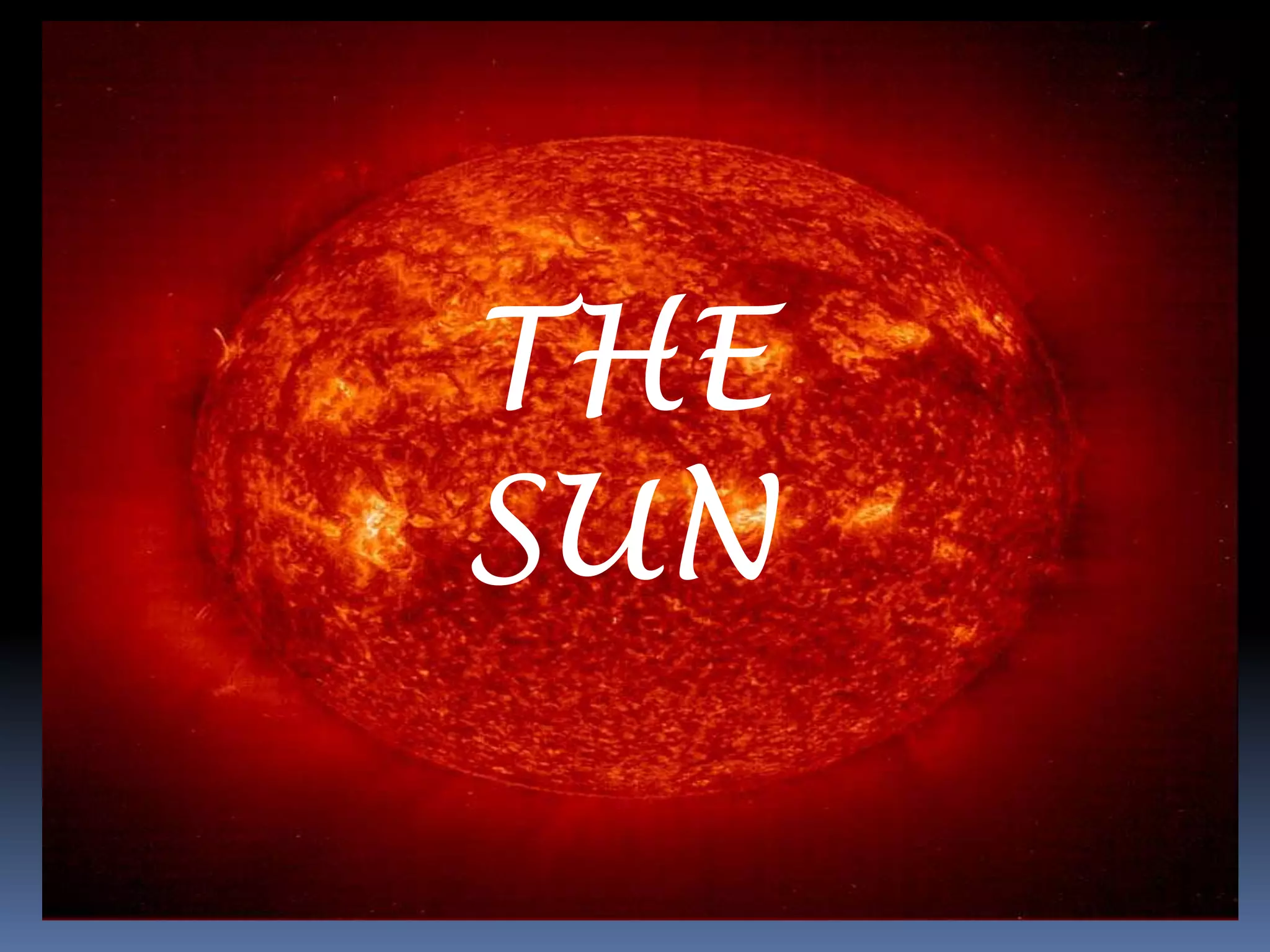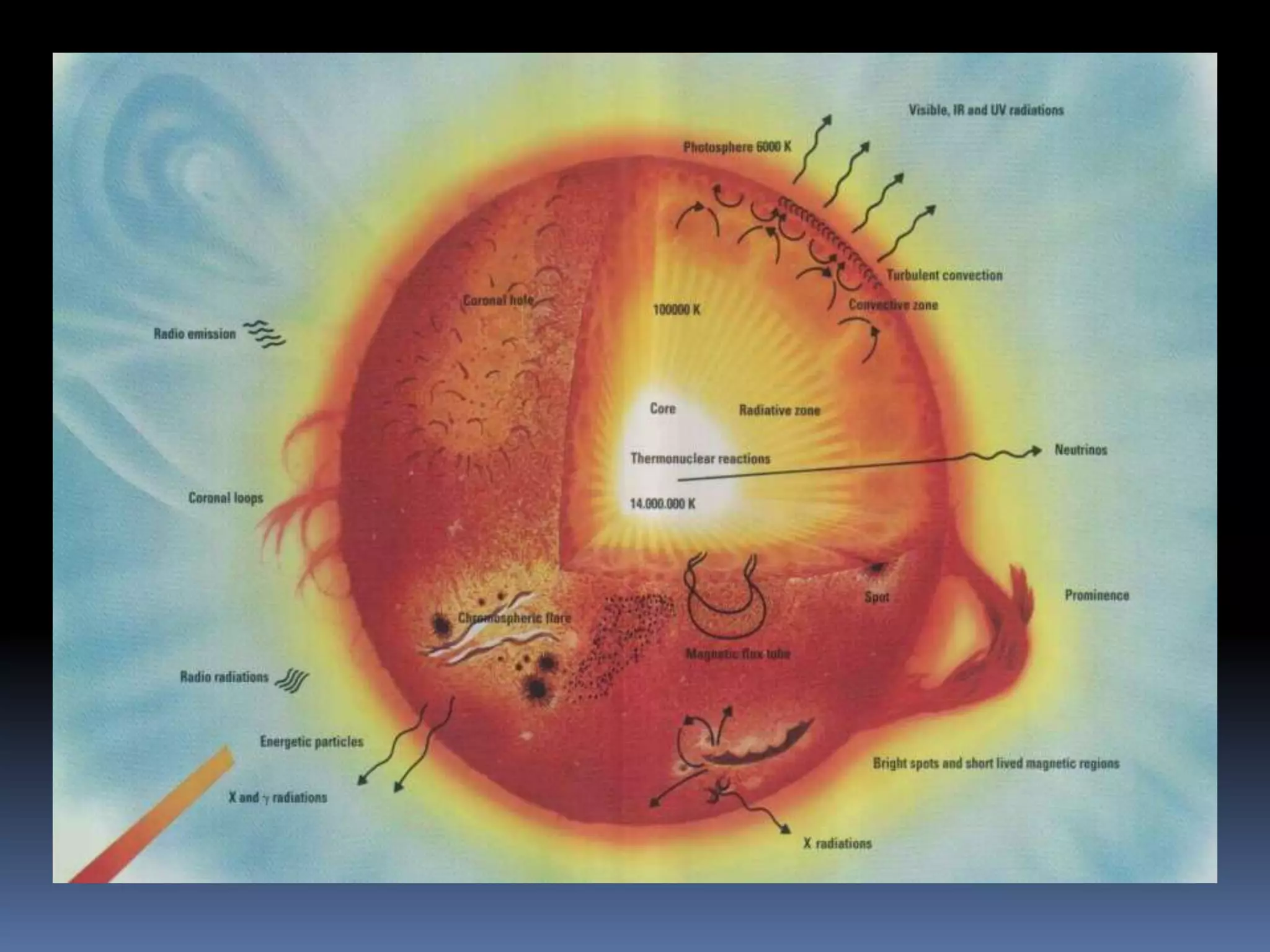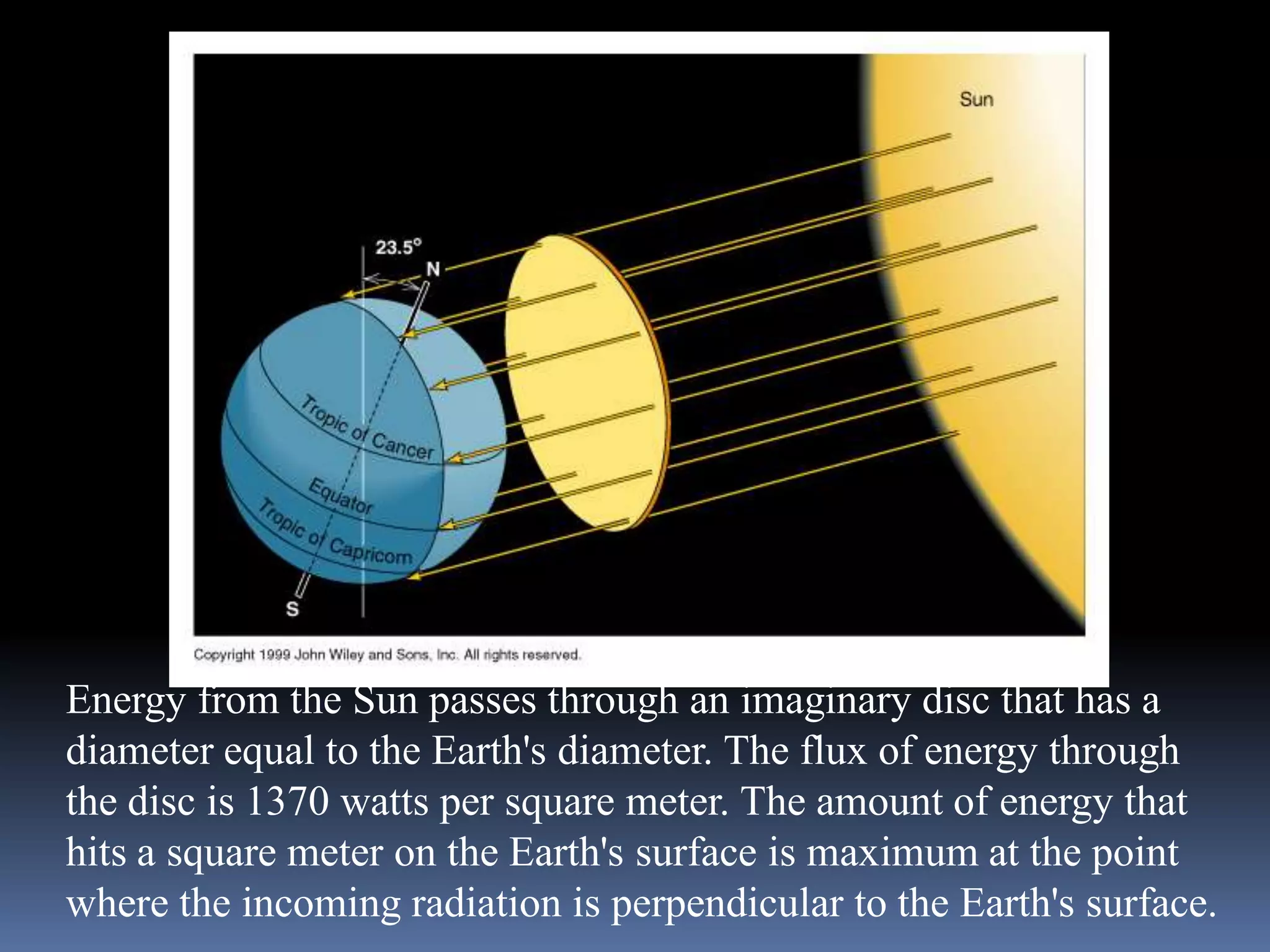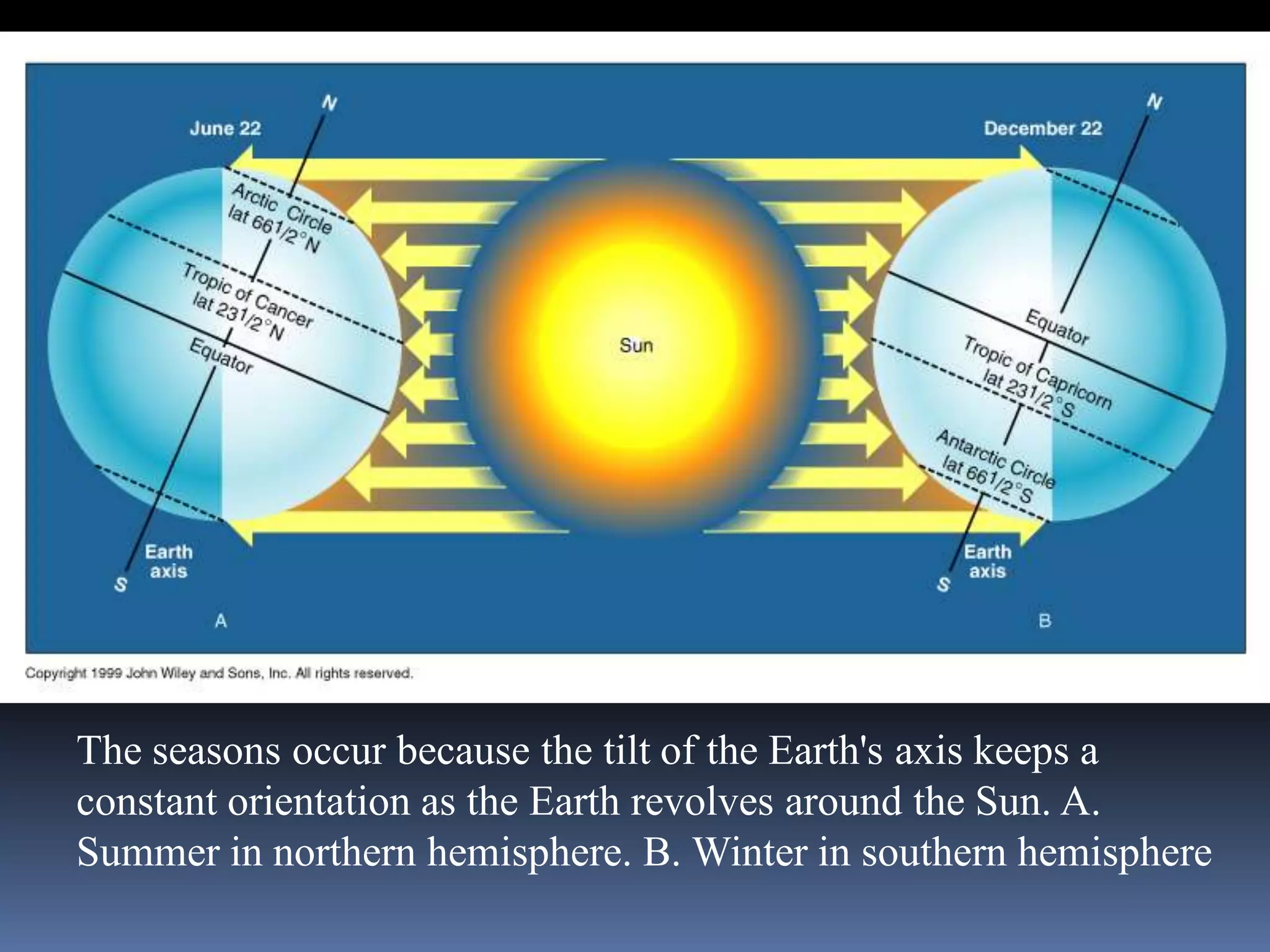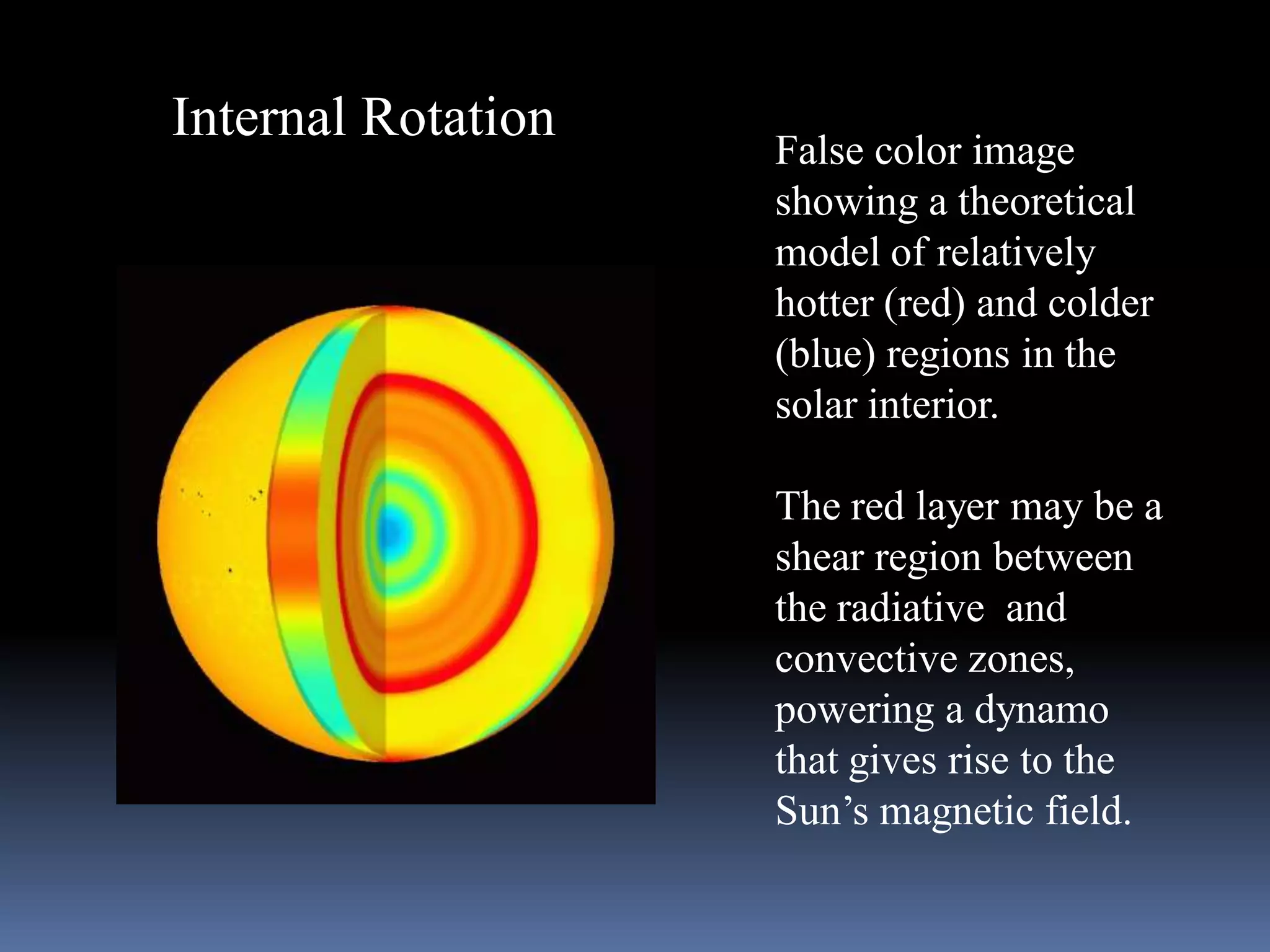The Sun is a normal G2 star located at the center of our solar system. It has a diameter of 1.39 million km and contains over 99% of the mass in the system. The Sun's core generates energy through nuclear fusion, converting hydrogen to helium, and this energy radiates outward through convection and radiation to power life on Earth. It has an 11-year solar cycle where its magnetic field and sunspot activity fluctuate.
